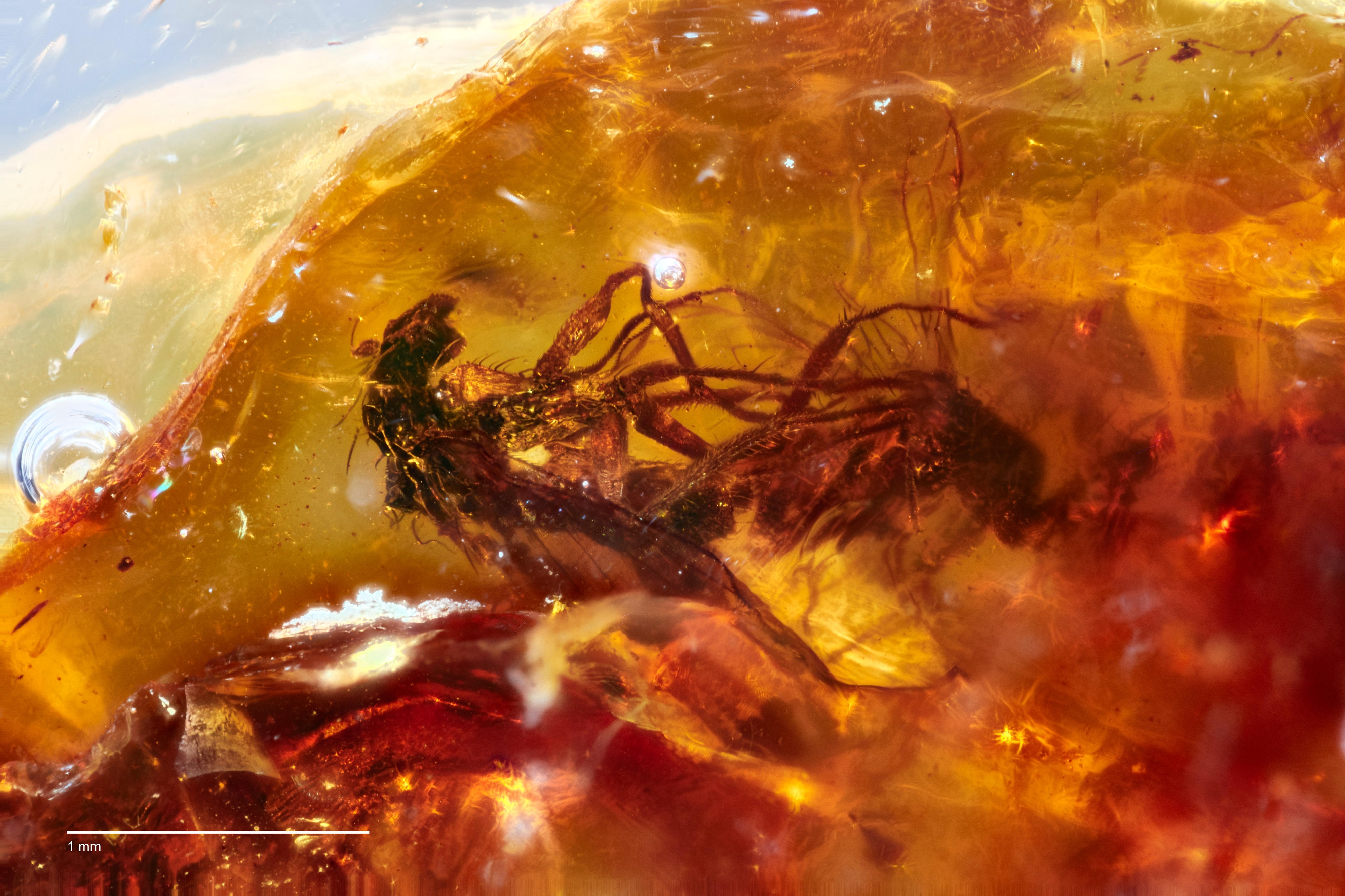Media release
From: Monash UniversityMonash palaeontologists have identified the oldest known animals and plants in Australia preserved in amber.
The Jurassic Park-style discovery is published today in the prestigious Nature’s Scientific Reports .
“This is one of the greatest discoveries in palaeontology for Australia,” said lead study author Associate Professor Jeffrey Stilwell from the Monash School of Earth, Atmosphere and Environment.
“Amber is considered to be a 'Holy Grail' in the discipline, as organisms are preserved in a state of suspended animation in perfect 3D space, looking just like they died yesterday - but in fact are many millions of years old, providing us with an enormous amount of information on ancient terrestrial ecosystems,” he said.
Most amber records are from the Northern Hemisphere but Associate Professor Stilwell’s team has confirmed that amber is abundant in the ancient supercontinents of Southern Pangea (Triassic) and Southern Gondwana (Cretaceous to Paleogene), in Australia and eastern New Zealand ('Zealandia').
Gondwana, the supercontinent made up of South America, Africa, Madagascar, India, Antarctica, and Australia, broke away from the Pangea supercontinent around 200 million years ago.
“The research furthers our understanding of prehistoric southern ecosystems in Australia and New Zealand during the Late Triassic to mid-Paleogene periods (230–40 million years ago),” Associate Professor Stilwell said.
The research team from Australia, Spain, Italy, and the UK studied more than 5,800 amber pieces from the Macquarie Harbour Formation in Western Tasmania (54-52 million years old) and Anglesea Coal Measures in Victoria, Australia (42–40 million years ago), many with exceptionally preserved animals, plants and microorganisms.
They observed a rare ‘frozen behaviour’ of two mating long-legged flies (Dolichopodidae).
“This may be the first example of ‘frozen behaviour’ in the fossil record of Australia,” Professor Stilwell said.
“Frozen behaviours are rarely recorded in the fossil record, but can be quite diverse, including defence, parasitism, feeding, swarms, and so on.”
The specimens also include the oldest known fossil ants from Southern Gondwana (first from Australia) and also the first Australian fossils of ‘slender springtails’, a tiny, wingless hexapod.
Other organisms preserved in the amber include a cluster of juvenile spiders, biting midges (Ceratopogonidae), two liverwort and two moss species.
These include the oldest reported amber from Southern Pangea dating back to 230 million years ago, 96–92 million year old deposits from forests near the South Pole and an intact fossil of an insect called a felt scale (Eriococcidae) from 54–52 million years ago.
"Our findings provide exciting new insights into the origin, antiquity and evolution of the modern Australian biota and show that there may be a vast potential for future, similar finds in Australia and New Zealand," Associate Professor Stilwell said.



